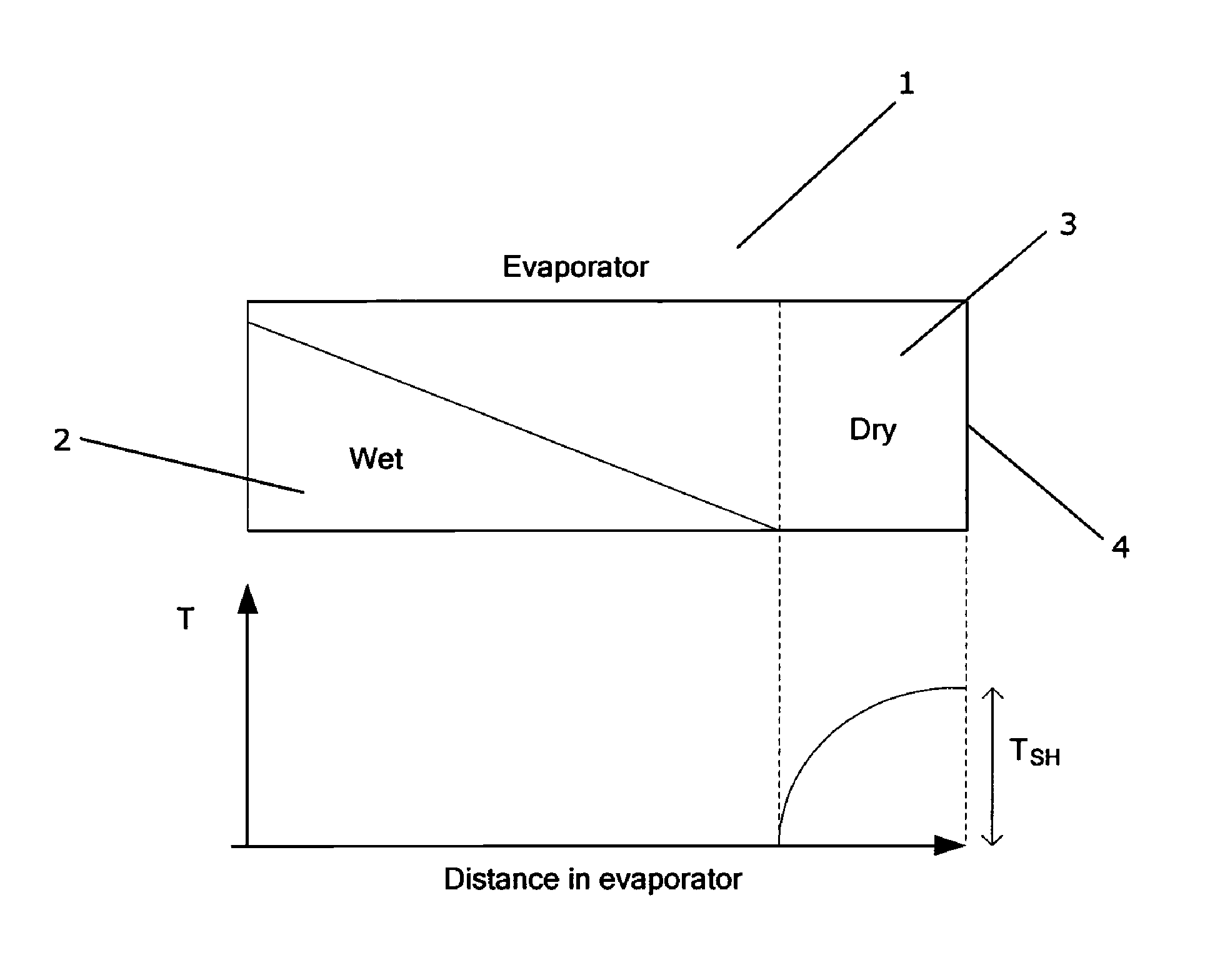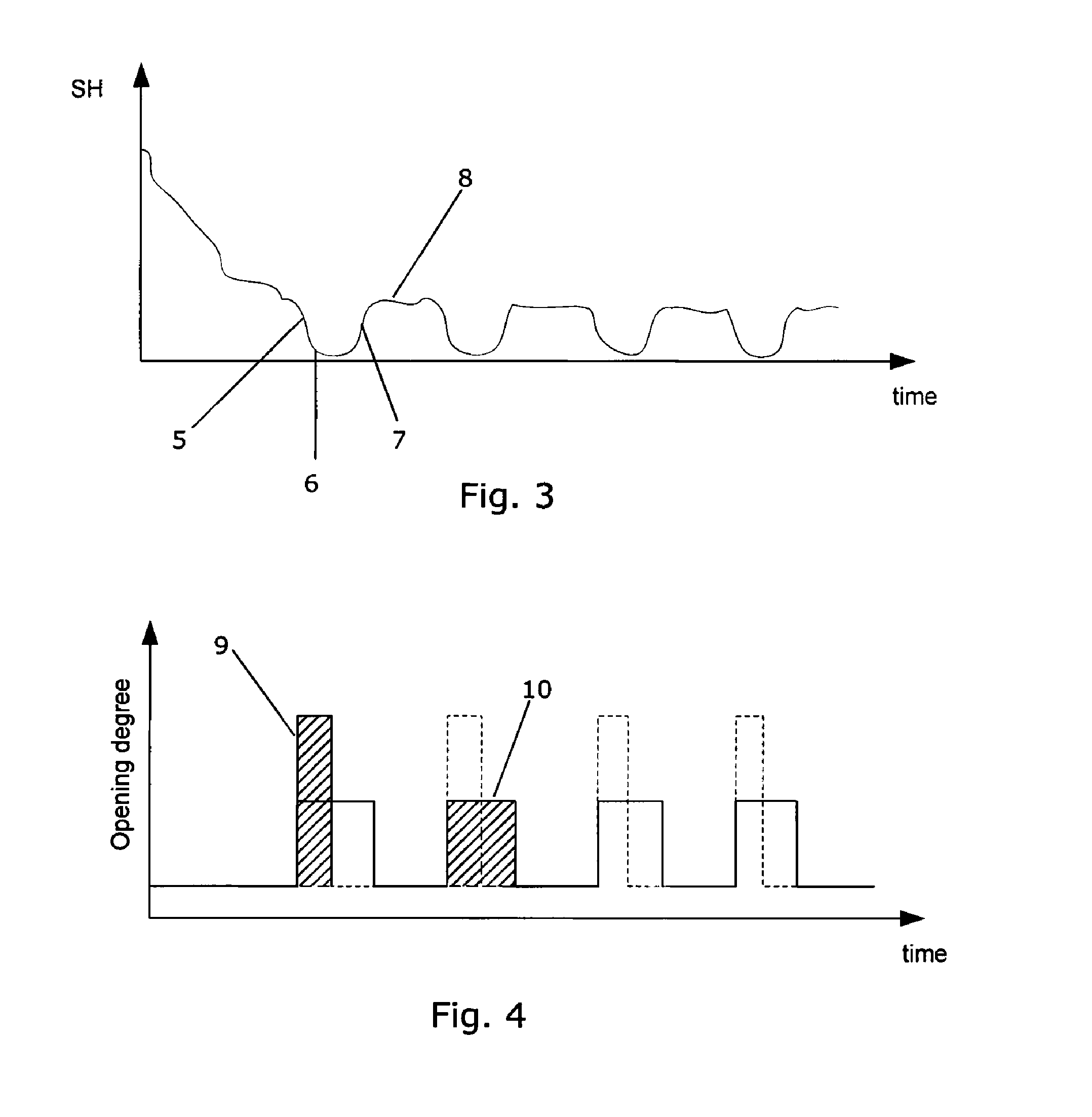Method for controlling a flow of refrigerant to an evaporator
a technology of refrigerant flow and evaporator, which is applied in the direction of refrigeration components, mechanical equipment, lighting and heating apparatus, etc., can solve the problems of insufficient utilization of refrigeration capacity of evaporator, damage to compressor, and reaches of refrigerant, so as to reduce the complexity of the refrigeration system, increase the utilisation of the refrigeration capacity of the evaporator, and reduce the effect of component coun
- Summary
- Abstract
- Description
- Claims
- Application Information
AI Technical Summary
Benefits of technology
Problems solved by technology
Method used
Image
Examples
Embodiment Construction
[0035]FIG. 1 shows an evaporator 1 during operation of a refrigeration system. The evaporator 1 has a first region 2 and a second region 3. The first region 2 contains refrigerant in a liquid / mixed state, i.e. the refrigerant in the first region 2 of the evaporator 1 is either in a liquid phase or it is a mixture of liquid and gaseous refrigerant. The second region 3 contains refrigerant in a purely gaseous phase. Accordingly, evaporation of refrigerant takes place in the first region 2 of the evaporator 1, but not in the second region 3 of the evaporator 1, i.e. only the part of the evaporator 1 which corresponds to the first region 2 is actually utilised.
[0036]The graph shown below the evaporator 1 illustrates the superheat value of the refrigerant as a function of position along the evaporator 1. It can be seen that the superheat value is zero in the first region 2 of the evaporator 1. As soon as the boundary between the first region 2 and the second region 3 is reached, the supe...
PUM
 Login to View More
Login to View More Abstract
Description
Claims
Application Information
 Login to View More
Login to View More - R&D
- Intellectual Property
- Life Sciences
- Materials
- Tech Scout
- Unparalleled Data Quality
- Higher Quality Content
- 60% Fewer Hallucinations
Browse by: Latest US Patents, China's latest patents, Technical Efficacy Thesaurus, Application Domain, Technology Topic, Popular Technical Reports.
© 2025 PatSnap. All rights reserved.Legal|Privacy policy|Modern Slavery Act Transparency Statement|Sitemap|About US| Contact US: help@patsnap.com



